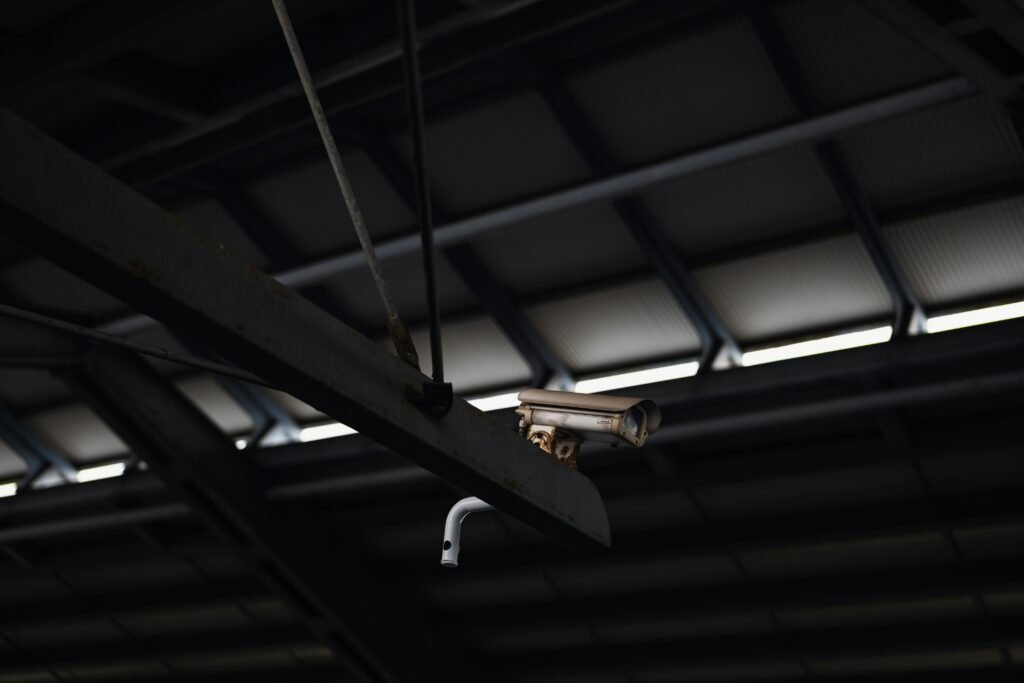Imagine you are a responsible gun owner, committed to ensuring the safety of yourself and those around you. In this article, you will discover the essential best practices for gun safety and storage that will empower you to become a master of responsible gun ownership. From securing firearms to practicing proper handling techniques, you will gain valuable insights on how to keep yourself and others safe, while also maintaining the integrity of your firearms. So, join us as we embark on this journey to become the epitome of responsible gun ownership.

This image is property of images.unsplash.com.
Choosing the right firearm
Understanding your needs and requirements
When it comes to choosing a firearm, it is crucial to understand your needs and requirements. What is the purpose of owning a firearm? Do you plan on using it for self-defense, hunting, target shooting, or any other specific activity? By identifying your purpose, you can narrow down your options and choose a firearm that is suitable for your needs.
Researching different types and models
Once you have determined your purpose, it is essential to research different types and models of firearms. Each type of firearm has its own characteristics, advantages, and disadvantages. Take the time to familiarize yourself with the various options available such as handguns, shotguns, and rifles. Consider factors like size, caliber, capacity, and ease of use.
Consulting with experts and experienced gun owners
Consulting with experts and experienced gun owners can provide valuable insights and guidance throughout the process of choosing the right firearm. Visit local shooting ranges, gun stores, or gun clubs to seek advice from knowledgeable professionals. They can help you understand the nuances of different firearms, provide recommendations based on your needs and help you make an informed decision.
Learning and practicing safe handling
Enrolling in a firearms safety course
Regardless of your experience level with firearms, enrolling in a firearms safety course is essential. These courses provide comprehensive education and training on firearm safety, handling, and usage. You will learn about the fundamental rules of gun safety, proper grip and stance, and how to safely load and unload a firearm. Taking a safety course instills the importance of responsible gun ownership, making you a more responsible and confident firearm owner.
Understanding the basic rules of gun safety
Understanding and following the basic rules of gun safety is crucial for responsible gun ownership. These rules are designed to minimize the risk of accidents and ensure the safety of yourself and others. Always treat every firearm as if it is loaded, keep your finger off the trigger until ready to shoot, never point the firearm at anything you do not intend to shoot, and be aware of your target and what is beyond it.
Developing safe handling habits through continuous practice
Practicing safe handling habits on a regular basis helps reinforce responsible gun ownership. It is essential to make it a habit to follow all safety protocols whenever you handle a firearm. Practice good trigger discipline, focus on proper muzzle control, and be mindful of your surroundings. By continuously implementing safe handling practices, you become more proficient and confident in your ability to safely operate a firearm.

This image is property of images.unsplash.com.
Securing your firearm at home
Investing in a quality gun safe
One of the most crucial aspects of responsible gun ownership is ensuring the security of your firearm at home. Investing in a quality gun safe is highly recommended to prevent unauthorized access and to protect your firearm from theft or damage. Gun safes come in various sizes and with different features, so choose one that suits your needs and budget.
Choosing the right safe size and features for your needs
When selecting a gun safe, consider your current firearm collection and any potential future additions. Choose a safe that provides enough space to accommodate your firearms while leaving room for accessories and ammunition. Look for additional features like fire resistance and pry-resistant construction for added security.
Properly installing the safe in a secure location
Installing your gun safe in a secure location is crucial for maximizing its effectiveness. Ensure that the safe is properly anchored to the floor or wall to prevent unauthorized removal. Place the safe in a discrete location, away from prying eyes, and consider setting up additional security measures such as security cameras or alarm systems to further deter theft.
Using additional security measures like locks and alarms
In addition to a gun safe, consider using additional security measures to enhance the safety of your firearm at home. Gun locks or trigger locks can provide an extra layer of security, especially when storing firearms outside of the safe temporarily. Alarms and surveillance systems can also provide added security and peace of mind.
Storing ammunition separately
Using a separate storage container for ammunition
Storing ammunition separately from firearms is a critical aspect of responsible gun ownership. Using a separate storage container specifically designed for ammunition helps maintain organization and adds an extra layer of safety. This ensures that ammunition is not easily accessible to unauthorized individuals, reducing the risk of accidents or misuse.
Keeping ammunition in a cool and dry place
Ammunition should be stored in a cool and dry place to maintain its integrity and longevity. Exposure to high temperatures or moisture can potentially damage the ammunition and affect its performance. Consider investing in a climate-controlled storage solution or use a dehumidifier to maintain optimal conditions for ammunition storage.
Ensuring proper labeling and organization
When storing ammunition separately, it is essential to establish proper labeling and organization. Clearly label containers with the type, caliber, and quantity of ammunition stored inside. Additionally, establish a system that allows for easy access and quick identification of the ammunition you need for specific purposes, such as target shooting or self-defense.

This image is property of images.unsplash.com.
Implementing access control measures
Using gun locks or trigger locks
Implementing access control measures is vital to prevent unauthorized use of your firearm. Gun locks or trigger locks can serve as an effective deterrent and an additional barrier to prevent accidents or unauthorized access. These locks impede the firearm’s ability to function, reducing the risk of misuse when storing firearms outside of a safe.
Utilizing biometric or key code safes
Biometric or key code safes provide secure and convenient access to your firearms while ensuring that only authorized individuals can retrieve them. Biometric safes use fingerprint recognition technology, while key code safes require the input of a unique access code. Both options offer a reliable means of access control, allowing quick access for authorized users while keeping firearms secure from unauthorized individuals.
Limiting access to trusted individuals only
Responsible gun ownership involves restricting access to firearms to trusted and responsible individuals only. This includes keeping firearms and ammunition out of reach of children and ensuring that they are unable to access them. Limiting access to trusted individuals helps prevent accidents, misuse, and unauthorized use of firearms.
Transporting firearms safely
Understanding and complying with local laws and regulations
Before transporting firearms, it is crucial to understand and comply with local laws and regulations. Different jurisdictions may have specific requirements when it comes to transporting firearms. Familiarize yourself with these laws and ensure that you are in full compliance when transporting firearms to the range, hunting grounds, or any other location.
Using a locked and hard-sided case for transportation
When transporting firearms, always use a locked and hard-sided case to ensure maximum safety. These cases provide a secure and durable container for your firearm, protecting it from damage during transit. Additionally, they provide an extra layer of security by requiring a key or combination to access the firearm.
Storing unloaded firearm with magazine or ammunition separate
To ensure the safety of yourself and others during transportation, store your firearm unloaded with the magazine or ammunition stored separately. This significantly reduces the risk of accidental discharge during handling. By separating the ammunition, you can maintain better control over the firearm and mitigate potential risks.
Teaching gun safety to others
Educating family members about gun safety
If you have firearms in your home, it is crucial to educate your family members about gun safety. Teach them the importance of firearm safety, including the basic rules of gun handling, safe storage practices, and the potential dangers associated with firearms. Encourage open communication about firearms within the household, ensuring that everyone understands their responsibilities when it comes to gun safety.
Providing proper training to children and teenagers
When it comes to children and teenagers, it is essential to provide proper training and education regarding firearms. By demystifying firearms and teaching them responsible gun ownership from a young age, you can instill a sense of respect and understanding. Consider enrolling them in age-appropriate firearms safety courses or classes to ensure they develop a solid foundation in gun safety.
Setting a good example of responsible gun ownership
As a responsible gun owner, it is crucial to set a good example for others, particularly those who may be new to firearms. Practice safe handling habits consistently and follow all protocols related to gun safety and storage. By demonstrating responsible gun ownership, you can inspire others to do the same and promote a culture of safety within the firearms community.
Regular firearm maintenance
Cleaning and lubricating the firearm regularly
Regular cleaning and lubrication of your firearm are essential to ensure its proper function and longevity. Cleaning removes debris, residue, and fouling that can accumulate over time, preventing malfunctions and potential damage. Proper lubrication helps reduce friction and wear on moving parts, maintaining the firearm’s smooth operation.
Inspecting for any signs of wear, damage, or malfunction
Regular inspections of your firearm are crucial to identify any signs of wear, damage, or malfunction. Carefully examine the firearm, paying close attention to components such as the barrel, slide, trigger mechanism, and magazines. Look for any cracks, rust, or other indicators of potential issues. If you notice anything questionable, seek professional assistance for repairs or servicing.
Seeking professional assistance for repairs or servicing
For any repairs or servicing needs, it is essential to consult professionals who are experienced in firearm maintenance. Attempting to fix or modify firearms without proper knowledge and expertise can lead to further damage or compromise safety. Reach out to qualified gunsmiths or firearm manufacturers who can address any issues and ensure that your firearm is in top-notch condition.
Understanding and complying with laws
Researching and understanding local, state, and federal laws
As a responsible gun owner, it is imperative to be knowledgeable about local, state, and federal laws pertaining to firearms. Research and understand the specific regulations and requirements in your jurisdiction, including laws related to purchasing, possessing, carrying, and using firearms. Stay informed about any updates or changes in legislation to ensure ongoing compliance.
Ensuring proper licensing, permits, and registrations
Complying with licensing, permits, and registration requirements is an essential part of responsible gun ownership. Depending on your jurisdiction, you may need to obtain a license or permit to legally possess or carry firearms. Similarly, some jurisdictions require the registration of certain types of firearms. Familiarize yourself with the necessary paperwork and processes to ensure legal compliance.
Staying updated with any changes in legislation
Laws and regulations related to firearms can change over time, which is why it is crucial to stay updated with any changes in legislation. Join firearm advocacy groups or subscribe to reputable sources of information to stay informed about new laws, regulations, or policies that may affect firearms owners. Being aware of these changes allows you to adjust your practices and remain in compliance with the law.
Being mindful of others
Respecting the rights and beliefs of non-gun owners
Responsible gun ownership involves respecting the rights and beliefs of individuals who choose not to own firearms. It is essential to engage in respectful discussions and honor their perspectives, even if they differ from your own. Avoid unnecessary confrontations and strive to promote understanding and open dialogue surrounding firearms.
Being aware of the potential impact of gun ownership on others
Owning firearms can potentially impact those around you, whether they are family members, neighbors, or colleagues. Be mindful of this impact and take measures to alleviate any concerns or fears that others may have. Practicing safe storage, adhering to legal requirements, and maintaining open communication can help foster positive relationships and minimize potential misunderstandings.
Maintaining open communication and addressing concerns
Maintaining open communication with those around you is crucial to foster a safe and respectful environment. Address any concerns or questions raised by friends, family, or neighbors regarding your ownership and usage of firearms. By actively engaging in conversations and providing information about responsible gun ownership and safety practices, you can help alleviate concerns and establish trust in your community.
Responsible gun ownership goes hand in hand with ensuring the safety of yourself, your loved ones, and your community. By following these best practices for gun safety and storage, you can promote a culture of responsible firearm ownership, reduce the risk of accidents, and have peace of mind knowing that you are doing your part to prioritize safety. Remember, gun ownership comes with great responsibility, but with the right knowledge, training, and mindset, you can be a responsible and safe gun owner.
